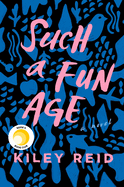
| Publisher: | Putnam | |
| Genre: | Women, Literary, Coming of Age, Fiction | |
| ISBN: | 9780525541905 | |
| Pub Date: | December 2019 | |
| Price: | $26 |
| Starred | Fiction |
by Kiley Reid
Alix Chamberlain is the white owner of a small, successful Philadelphia business. She has a toddler and an infant as well as a book to write, so she hires 25-year-old Temple University graduate Emira Tucker, who is black, to babysit three days a week. Alix considers Emira a godsend and wants her to know it. Kiley Reid's debut novel, Such a Fun Age, is about the way that good deeds fueled by even the best intentions can fizzle under the weight of unacknowledged self-interest.
One Saturday, Emira gets a phone call from Alix at nearly 11 p.m.: she's in a jam and needs care for her toddler. Emira can use the cash, so she drops everything to kill time at an upscale grocery store with the two-year-old.
At the market, a middle-aged white woman sees Emira with the white toddler and alerts a security guard, who confronts Emira, suggesting that she has kidnapped the child. Alix is appalled by the incident and wants to prove to Emira that she isn't just another entitled white person. Reid, who is black, has an acute understanding of well-meaning white people's sometimes squirmy racial sensitivity. A lesser writer would have taken the book's powder-keg material--which does, of course, ultimately explode--and set it off with too-easy satire. The strength of Such a Fun Age lies in Reid's even hand with both Emira and Alix, whose points of view switch off fairly regularly throughout the novel. Neither character is archetypal: Emira is levelheaded but frustratingly aimless, and Alix is entitled without being risible--well, until the book's end. --Nell Beram, author and freelance writer
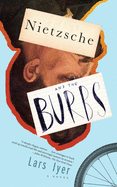
| Publisher: | Melville House | |
| Genre: | Humorous, Black Humor, Fiction | |
| ISBN: | 9781612198125 | |
| Pub Date: | December 2019 | |
| Price: | $16.99 |
| Fiction |
by Lars Iyer
Lars Iyer (Wittgenstein Jr.) makes nihilist philosophy hip and fun in his highly entertaining tragicomedy Nietzsche and the Burbs.
The novel introduces a group of disaffected teenagers finishing their last year of secondary school before heading out into the big, uncaring world: Art, Merv, Paula and the narrator, Chandra. The foursome inducts into their clique a new student, whom they nickname Nietzsche due to his gloomy disposition and pessimistic outlook on life. They sense he is intellectually superior, perhaps braver, and thus look up to him as a kind of leader. The four get him to front their rock band, called Nietzsche and the Burbs, believing music can save them from the banality of life. For his part, Nietzsche plays in the band--though not as enthusiastically as his friends would like--and spends most of his time developing a philosophy of the suburbs, posting on his blog about his conclusions while participating in the parties and the general hullabaloo of high school.
Iyer writes in short, emphatic elliptical sentences, a little maddening in their repetition but effective in creating a mood of rebellious adolescence. The style works in portraying the young characters' molten thoughts and emotions, as well as in satirizing the suburbs and school life.
The brilliant, relentless drive of the narrative of Nietzsche and the Burbs demands a certain amount of stamina from readers. But the payoff is great. Perhaps not since Don DeLillo's White Noise has a novel so funnily and savagely lifted the veil on Western postmodern culture. What's underneath is hard to explain. Some may find darkness, others beauty. --Scott Neuffer, writer, poet, editor of trampset
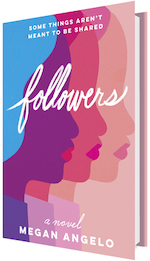
| Publisher: | Graydon House | |
| Genre: | Women, Friendship, Dystopian, City Life, Literary, Fiction | |
| ISBN: | 9781525836268 | |
| Pub Date: | January 2020 | |
| Price: | $26.99 |
| Fiction |
by Megan Angelo
Megan Angelo has written about women and television for Glamour, youth activism and social media for Elle and reality TV for the New York Times. In her debut novel, she uses those topics as fodder for her explosive imagination. The shrewd and surprisingly moving result is a darkly prophetic novel that takes an incisive look at women, fame and the future of social media stardom.
In 2015, aspiring novelist Orla Cadden toils in obscurity at New York City click-bait farm Lady-ish, chronicling celebrity fashion and gossip. She tells herself she's biding time until her big break, but when the washed-up actress she usually covers dies, Orla realizes she's at a dead end. With nothing to show for her career besides an unfinished novel and a long list of throwaway blog posts, she needs help leveling up. Her turning point arrives in the form of Floss, a would-be social media influencer who believes Orla can make her famous. The two young women form an alliance, and Orla uses her Lady-ish position to gain a following for Floss. However, as Floss's star rises, jealousy and mistrust worm into their relationship, and the slippery nature of Internet fame whiplashes their plans more than once. Wrapped up in their own struggles, neither suspects the technological disaster looming over their entire nation, or that their actions will have dire repercussions decades in the future.
"Meet Marlow.... She knows just how you feel." In the year 2051, Floss's grown daughter, Marlow, lives in Constellation, a ready-made community built over the ashes of a wildfire-ravaged California county. In this town, theatrical lighting produces perfect sunsets, the laser-cut leaves on the man-made trees change color at the push of a button and the entire population exists in a state of perpetual reality programming. Government-appointed celebrities spend nearly every moment of their lives on camera feeds broadcast by the new state-controlled Internet. In the world outside, their followers watch, comment and absorb the barrage of advertising messages embedded in the stars' product choices, including food, clothing, medical procedures and pharmaceuticals. Network execs hide themselves among extras to oversee the talent, giving direction the audience never sees. Her pesky emotions smoothed to neutral by Hysteryl, the antidepressant whose manufacturer sponsors her media feed, Marlow goes through the motions of her studio-ordained marriage and accepts that the studio will not allow her to travel outside Constellation. When she and her husband, Ellis, receive the notification that they will begin a pregnancy plot arc, the boutique genetic design process for the child reveals startling information about Marlow's background. Shocked and determined to unravel the resulting mystery, Marlow flees into the real world. However, Constellation won't let one of their biggest stars escape so easily, and with 12 million followers chasing her in what they believe is a planned publicity stunt, Marlow may not find her answers in time.
In chapters alternating between the two time periods, Angelo unspools a dual narrative that carries the current confluence of social media, entertainment and advertising to natural but frightening conclusions. Comparisons to the British television drama Black Mirror naturally spring to mind throughout the story, but perhaps nowhere more so than in Angelo's imagined future. Marlow lives a life in which security comes at the cost of independence. Her contracts imprison her, her options are as limited and controlled as those of a Victorian lady and even her thoughts are partially scripted. The evolution of unobtrusive, embedded smart technology reaches an alarming zenith in "devices," standalone smart jewels that transmit content and messages directly into their users' brains in the first person. If Marlow leaves filming range for the privacy of a bathroom, her device plays the words "I should return to an on-camera space" in her brain as though she thought them herself.
Floss and Orla's exploits illustrate the dangers of trying to harness social media's power for personal gain. Grabbing the social media spotlight may bring fame, but it shines most brightly on embarrassment and catastrophe. Angelo sharpens the tension by adding a satiric bite that provides a constant reminder that Internet and reality television fame are tricky balancing acts. Even her characters' successes have the precarious feel of watching someone cross thin ice. This portrait of two bright young things living on the edge evokes the precipice on which their world unknowingly teeters as citizens consume digital media voraciously, never expecting it to consume them in return.
Although fast-paced, Followers will make rich discussion material for book clubs, raising hard questions about the price of celebrity, the ethics of technology use and how much of today's entertainment contains subtle commercials. At the same time, its core sings with emotion. Angelo's high-concept plot hangs gracefully on the framework provided by the interesting chemistry between her characters. Somewhere in Floss and Orla's complicated history lies the answer to the mystery Marlow pursues, unfolding for the reader as she tracks through the clues. An excavation of a complex female friendship as well as a deep dive into the direction social media is pulling the U.S., Angelo's first outing is sharp, perceptive and ultimately hopeful. --Jacki Fulwood
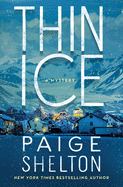
| Publisher: | Minotaur Books | |
| Genre: | Mystery & Detective, Amateur Sleuth, Traditional, Fiction, Women Sleuths | |
| ISBN: | 9781250295217 | |
| Pub Date: | December 2019 | |
| Price: | $26.99 |
| Mystery & Thriller |
by Paige Shelton
Paige Shelton (The Loch Ness Papers) departs from her cozy Scottish mysteries in Thin Ice, the riveting first entry in an Alaskan suspense series. Beth Rivers, known to the world as thriller writer Elizabeth Fairchild, recently was kidnapped by a crazed fan, Levi Brooks, and was badly injured while escaping from him.
Fleeing to a remote Alaskan town, population 500, Beth is hoping to find safety. But instead, she discovers that Benedict is a town full of secrets. She thought she'd booked a room at a hotel, but it turns out that Benedict House is actually a halfway house for female shoplifters. And Beth's new dorm-mates are possibly not the only people in Benedict with criminal pasts to hide.
After talking to the local police chief about how to blend in and hide her past as Elizabeth Fairchild, Beth decides to take over the publication of the town's very occasional local newspaper. When a woman turns up dead, apparently by suicide, Beth uses her cover as the local reporter to help Benedict's police chief investigate the situation.
Back home in Missouri, the police have been unable to trace Levi Brooks, and Beth begins to worry that somehow Levi has chased her all the way to Alaska. Suspenseful and intriguing, Thin Ice captures the intensity of life in a spartan setting and the fraught nature of Beth's mental state in the wake of her suffering. Shelton's fans are sure to enjoy this compelling departure from her typical writing style. --Jessica Howard, bookseller at Bookmans, Tucson, Ariz.
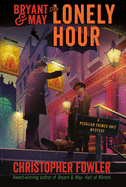
| Publisher: | Bantam | |
| Genre: | Mystery & Detective, Traditional, International Crime & Mystery, Suspense, Thrillers, Fiction | |
| ISBN: | 9780525485827 | |
| Pub Date: | December 2019 | |
| Price: | $28 |
| Mystery & Thriller |
by Christopher Fowler
The Peculiar Crimes Unit is a specialized division of the London police; as the PCU's chief puts it, "If the Met doesn't want to touch it, it comes to us."
The PCU is notorious for its most senior detective, the getting-on-in-years Arthur Bryant, a walking anachronism. Bryant wears a trilby, peppers his speech with old English slang and has an adversarial relationship with technology--and sometimes with his long-suffering partner, detective John May.
As Bryant & May: The Lonely Hour opens, a man named Dhruv Cheema has been found hanging by his ankles, his throat cut, on London's Hampstead Heath. While Bryant and May are investigating the possibility that Cheema was sacrificed in a satanic ritual, the Met hands the PCU another case: a man's body has just been pulled from the Thames. His throat was pierced with the same weapon used on Cheema: a surgical instrument called a trocar. What's more, both men died at the same lonely hour: 4 a.m.
The 16th book in Christopher Fowler's Peculiar Crimes Unit series (Bryant & May: Strange Tide) is a cracking good caper twined with whip-smart PCU-centered subplots. The Lonely Hour is also a love letter to London, especially evident in the book's excerpts from Bryant's "Peculiar London" walking-tour guide. All this is laced with impious humor from the Monty Python school. Bryant's attempt to console the chief about his dead cat: "She had a good life.... I could have used her for all kinds of experiments but I hardly ever did." --Nell Beram, author and freelance writer
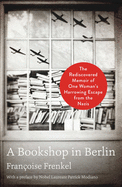
| Publisher: | Atria | |
| Genre: | Biography & Autobiography, Survival, Historical, Jewish | |
| ISBN: | 9781501199844 | |
| Pub Date: | December 2019 | |
| Price: | $26 |
| Biography & Memoir |
by Françoise Frenkel
Françoise Frenkel's decision to open a bookshop in Berlin soon after World War I will eventually save her life. Frenkel, who was a Polish Jew, has loved books since she was a child, and her years spent living in Paris have given her a passion for French literature. When she learns that Berlin has no stores that sell books written in French, she decides to launch one, which lends this rediscovered memoir its title, A Bookshop in Berlin (originally published in 1945 as No Place to Lay One's Head). Frenkel carries out her plan despite the French Consulate General's warning to her that memories of the war will probably cause Berliners to "burn it to the ground."
Not only does Frenkel open La Maison du Livre, she manages to create a French cultural center that attracts German customers as well as foreign residents. The contacts she makes through her store give her an advantage when she--with many other refugees--flees to France in the late 1930s. Armed with a French residency permit and a letter that says she has, through her bookstore, "rendered significant service to France," Frenkel is taken in by a French family who shelter and guide her through varying forms of safety for almost a year, until at last she's able to cross the border into Switzerland.
Throughout her memoir, Frenkel maintains a voice of cool detachment as she tells about the horror of Kristallnacht, the fear she feels when she receives no news from her mother after Hitler invades Poland, and the rapidity with which daily living turned into a death threat for European Jews. A Bookshop in Berlin echoes through time as a warning that resonates today. --Janet Brown, author and former bookseller
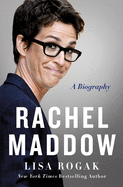
| Publisher: | Thomas Dunne Books | |
| Genre: | Biography & Autobiography, Editors, Journalists, Publishers, Entertainment & Performing Arts | |
| ISBN: | 9781250298249 | |
| Pub Date: | January 2020 | |
| Price: | $28.99 |
| Biography & Memoir |
by Lisa Rogak
Emmy Award-winning news host Rachel Maddow once said, "I am a childless, middle-aged, potbellied lesbian, and I don't have that much to be excited about in my life other than having a great job." But prolific biographer Lisa Rogak (Angry Optimist: The Life and Times of Jon Stewart) has created a breezy and compelling biography by detailing captivating facets of Maddow's workaholic nature. Her hour-long MSNBC TV show airs five nights a week, 50 weeks a year. "It takes me a good solid ten hours to prep an hour of TV," Maddow reveals. "I live what I think of as my own life between two A.M. Saturday morning and seven A.M. Monday morning."
Maddow's love of news started early. Her mother remembers three-year-old Rachel teaching herself to read by reading the morning newspaper. After college, she became a regular contributor on Tucker Carlson's MSNBC TV show. After ratings rose when she substitute-hosted Countdown with Keith Olbermann several times, MSNBC created The Rachel Maddow Show for her in 2008. Rogak periodically veers away from the all-consuming TV show to peek inside Maddow's private life. She and her partner, photographer Susan Mikula, have been together since 1999. When they met, they were both dating other people. Rogak also discusses the cyclical depression Maddow has had since puberty but only recently made public, when she realized that it could help others suffering from depression.
Fans of the political commentator will discover new aspects of Maddow's life on and off camera in this first-rate biography that constantly showcases Maddow's deprecating, droll wit. --Kevin Howell, independent reviewer and marketing consultant
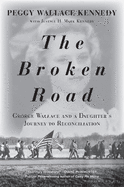
| Publisher: | Bloomsbury | |
| Genre: | Biography & Autobiography, Discrimination & Racism, Personal Memoirs, Social Science | |
| ISBN: | 9781635573657 | |
| Pub Date: | December 2019 | |
| Price: | $28 |
| Biography & Memoir |
by Peggy Wallace Kennedy, Justice H. Mark Kennedy
Although readers of The Broken Road: George Wallace and a Daughter's Journey to Reconciliation shouldn't expect an image rehabilitation of its subject, Peggy Wallace Kennedy writes with some sympathy for her father, who had a rough childhood. For that matter, so did his daughter.
George Wallace, the notorious segregationist and four-term governor of Alabama, was an absent father in both senses; he was also a womanizer. His restlessness kept the Wallaces largely in poverty until he finally won the governorship in 1962. Before he ran for office, Wallace was known for his progressive views, but "Daddy was willing to bend his moral universe toward power," Kennedy writes. She is also clear-eyed about her father's cynical tactics: "Daddy understood the power of hate and fear and exploited these feelings to gather support." Although Kennedy doesn't draw an explicit connection, it will be hard for readers not to link her father's apparent megalomania with her own mental health challenges, which she describes with devastating frankness.
Even as a teenager, Kennedy knew that her father's politics were ugly, and in The Broken Road she intermittently expresses regret that she didn't confront him: "Was I lost in the trappings of the advantages I now see?" (Some of those advantages are evident in the book's two dozen black-and-white photos, which include posed shots of Alabama's first family.) Kennedy explains that her activism on behalf of civil rights during her adult life is "part of my commitment to make things right." So is this courageous, unblinkered memoir. --Nell Beram, author and freelance writer
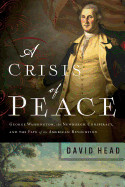
| Publisher: | Pegasus Books | |
| Genre: | United States, Revolutionary Period (1775-1800), History, Military | |
| ISBN: | 9781643130811 | |
| Pub Date: | December 2019 | |
| Price: | $28.95 |
| History |
by David Head
Following Britain's 1781 surrender to the Continental Army in the Battle of Yorktown, the American colonies rejoiced: independence and peace were near! History professor David Head (Privateers of the Americas) investigates why commander-in-chief George Washington and the Confederation Congress, however, feared a different result.
Plagued by complicated financial growing pains and a constant struggle to define itself as a unified government, Congress had been unable consistently to pay the army's soldiers through the grueling war. Officers and soldiers, worried that peace would see them returned to civilian life with no restitution for years of sacrifice, were brimming with resentment. They "believed in republican government and creating the world anew," but they also wanted to be honored and paid. As Congress continued to struggle, the possibility of mutiny grew, culminating in March of 1783 with the Newburgh Conspiracy. An inflammatory, anonymously written letter circulated through the military camp urging stronger demands of Congress, including a threat of military refusal to disband. With the revolution on the verge of self-destruction just months before the war's conclusion, it was only Washington's poise that kept the infant American nation from tearing apart, Head writes. "Washington understood his men and his country. In an hour of grave danger... Washington knew how to inspire his officers' perseverance by asking for their trust."
Head dissects the events leading up to and through the so-called conspiracy, tracking financial records, correspondences and congressional documents to paint a vivid picture of a newborn nation in crisis. Meticulous and balanced, A Crisis of Peace lays out the vitally important circumstances that led to a critical moment in our nation's history and Washington's indispensable role in preserving the peace. --Jennifer Oleinik, freelance writer and editor

| Publisher: | Plume | |
| Genre: | Self-Help, Personal Growth, Technology & Engineering, Etiquette, Social Aspects, Personal Success, Reference, Business & Economics, Success | |
| ISBN: | 9780593086193 | |
| Pub Date: | January 2020 | |
| Price: | $16 |
| Starred | Psychology & Self-Help |
by Victoria Turk
In Kill Reply All: A Modern Guide to Online Etiquette, from Social Media to Work to Love, Victoria Turk navigates the uncharted terrain of digital social manners, explaining how online behavior can affect one's real-life relationships. Along with colorful commentary on the quirks of modern Internet culture, Turk offers advice in four main areas: the workplace, friendships, the art of romance and social media communities. Smartphone etiquette receives special attention, with guidelines for sexting, appropriate times to send nude photos and the secret vocabulary of emojis.
Turk is features editor at Wired U.K. and a journalist focused on the cultural impact of modern technology; she has a flair for humorous writing and her anecdotes are as entertaining as they are constructive. There is a charming British tilt to Turk's advice, including a brief section entitled "How do you address an email to the Queen?" The title of Kill Reply All refers to an online habit that, in her opinion, demonstrates a complete lack of online decorum: the overuse of the "reply all" feature in response to large group e-mails, creating an unwieldy e-mail thread. In an effort to rein in the out-of-control inbox, Turk suggests that e-mail should be used only as a last resort, especially in the workplace. She is a disciple of the Inbox Zero school of thought, which advocates a Marie Kondo-style of inbox cleanup.
Kill Reply All will speak to those who grew up in the analog era but who have, for better or worse, wholly embraced the technology revolution. It picks up where etiquette experts like Emily Post left off, providing a necessary counterpoint to the wild west nature of the smartphone-dominated digital age. --Shahina Piyarali, writer and reviewer
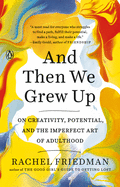
| Publisher: | Penguin Books | |
| Genre: | Self-Help, Personal Growth, Biography & Autobiography, Personal Memoirs, Motivational & Inspirational, Success | |
| ISBN: | 9780143132127 | |
| Pub Date: | December 2019 | |
| Price: | $17 |
| Psychology & Self-Help |
by Rachel Friedman
There are plenty of books about people who follow their artistic dreams to glory. Rachel Friedman asks, "How about some books where we focus on gracefully giving up on something?" And Then We Grew Up: On Creativity, Potential, and the Imperfect Art of Adulthood is a fine specimen of the sort.
The book evolved out of Friedman's disappointment that she hasn't reached a level of financial solvency in her chosen creative field. Even after she became a published author--her first book was the travel memoir The Good Girl's Guide to Getting Lost--she had to take a part-time job as a managing editor to make ends meet. She wanted to know if her disillusionment is shared by others who, like her, fully intended to earn a living as an artist.
Friedman had a ready-made subject sample: her cohort of 20-odd years earlier at Interlochen, the fabled Michigan performing arts camp where she studied viola. In college, she felt as though she had hit a creative wall as a musician and stopped playing. She has wondered ever since if this was a mistake. Friedman tracked down some of her fellow campers. There's Daniel, an actor who transitioned to screenwriting and then took a job as a creative director at a Los Angeles special effects studio. There's Jenna, a violin prodigy who is now a high school orchestra teacher. From these and more, Friedman hopes to learn who is still reaching for the stars and to what extent they have accepted compromise--and in And Then We Grew Up, "compromise" is usually a gentler way of saying "day job." --Nell Beram, author and freelance writer
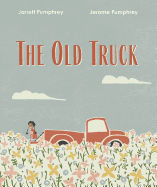
| Publisher: | Norton Young Readers | |
| Genre: | Transportation, Cars & Trucks, Lifestyles, Imagination & Play, Farm Life & Ranch Life, Juvenile Fiction | |
| ISBN: | 9781324005193 | |
| Pub Date: | January 2020 | |
| Price: | $17.95 |
| Starred | Children's & Young Adult |
by Jarrett Pumphrey, Jerome Pumphrey
Inspired by the strong women in the authors' lives and brought to life by more than 250 individually crafted stamps, The Old Truck is a quietly powerful ode to hard work and perseverance.
A farming family--mother, father, daughter--cheerfully toils through the seasons, feeding chickens and loading their red truck with produce even as the vehicle grows older--"And older./ And older still," until it settles into the weeds by the now-weathered barn. In a playful story bridge, the "weary and tired" truck dreams of sailing the seas, braving the skies and chasing the stars with the little girl. The girl--first seen as a bump in her mother's belly--works side by side with her parents, carrying baskets and tinkering with the tractor and truck engines. Time passes. Now a grown woman, the next-generation farmer hauls the old truck out and works day and night to repair it. Finally, she's rewarded with a satisfying (and boldly printed) "VROOOOOOOM!!" much to the panicked chickens' alarm and readers' delight.
This is a book that invites close and frequent reading. Attuned listeners will hear in the minimal text comfortable repetition with variations: "On a small farm, an old truck worked hard./ The old truck worked long." Keen-eyed children will catch small details: the way the barn gradually fades from red to brown and the foliage and crops change with the seasons. Author/illustrators and brothers Jarrett Pumphrey and Jerome Pumphrey use a natural, earthy palette to express the simple joys of self-sufficiency and a connection to the land. Place this beauty on a low shelf with easy access. It will likely be in regular circulation among discerning young readers. --Emilie Coulter, freelance writer and editor

| Publisher: | Holiday House | |
| Genre: | People & Places, Railroads & Trains, Transportation, United States - African-American, United States - 20th Century, Stories in Verse (see also Poetry), Juvenile Fiction, Historical | |
| ISBN: | 9780823438730 | |
| Pub Date: | January 2020 | |
| Price: | $18.99 |
| Children's & Young Adult |
by Lesa Cline-Ransome, illust. by James E. Ransome
In Coretta Scott King honoree Lesa Cline-Ransome (Finding Langston) and CSK medalist James E. Ransome's (The Bell Rang) Overground Railroad, Ruth Ellen and her parents, along with many other black people, join the Great Migration, traveling from the agricultural south to the urban north. Through handsome collage, pencil and watercolor illustrations and lyrical free verse, the family's hopeful journey to find better jobs, homes and rights shows readers a major moment in the large scope of African American history.
In contrast to the earlier safe houses known as the "underground railroad," new developments in transportation meant that real railroads (and buses and cars) became the means of escape for people still tied to the land through sharecropping. Young readers will likely be drawn in by the author's riff on a familiar phrase in the title, as well as the spare but poetic language in which Ruthie narrates her long day's journey, starting in a North Carolina town at daybreak and ending in New York City later that night.
The family gets its first taste of change when they leave the train's colored section after Washington, D.C. But children will recognize that, despite the family's optimism, white people in the north still harbor prejudice. Ransome's bold, multimedia double-page spread expertly depicts this by showing a set of wary eyes peeking over a newspaper as a lady in a flowered dress holds her hand over an empty seat. Despite this sad state of affairs, "Mommy and Daddy say/ jobs/ education/ freedom/ are waiting in New York for us." Throughout, Ruthie reads aloud to her mother from the "Narrative of the Life of Frederick Douglass," paying tribute to the characters' ongoing search for freedom. --Melinda Greenblatt, freelance book reviewer